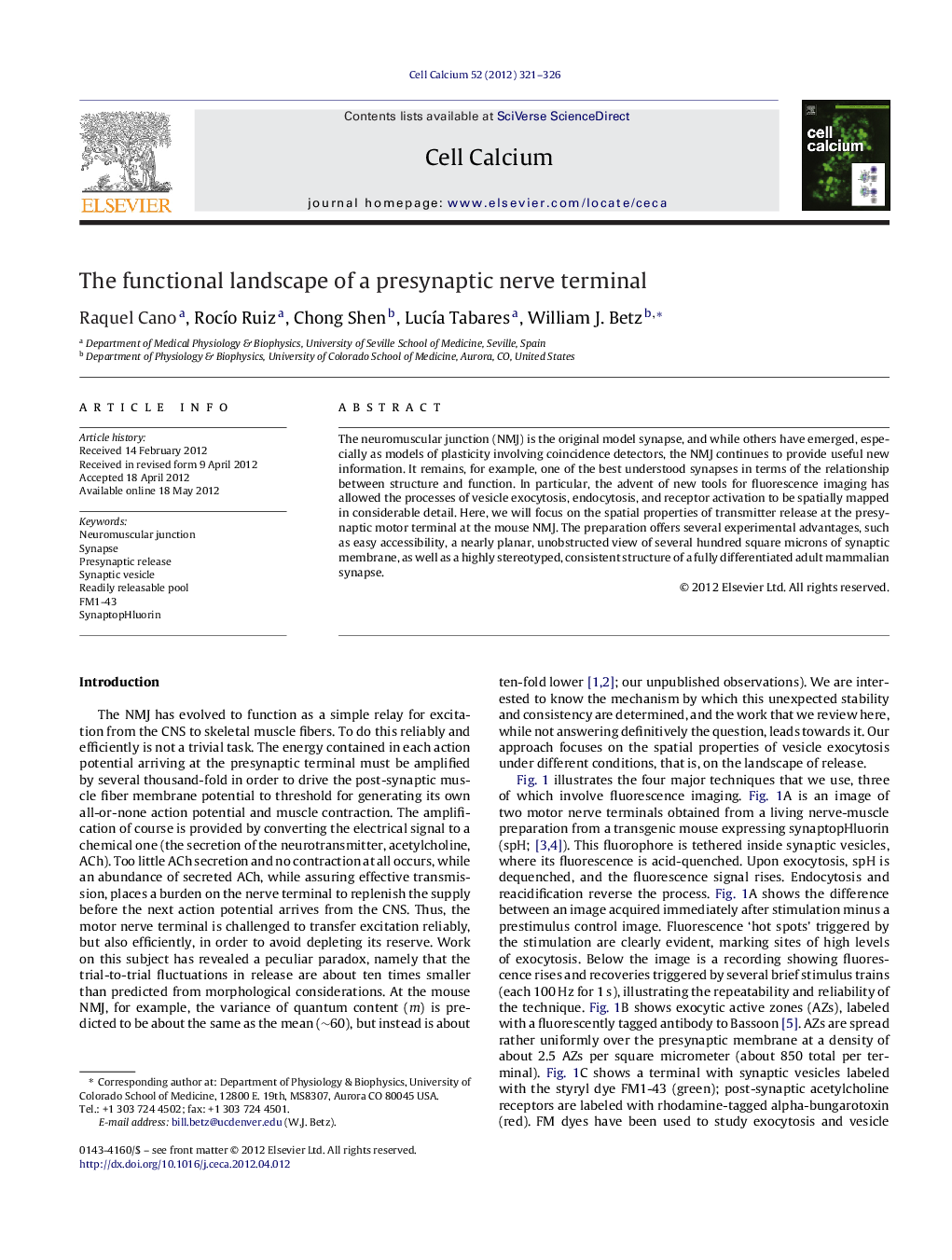| Article ID | Journal | Published Year | Pages | File Type |
|---|---|---|---|---|
| 8463456 | Cell Calcium | 2012 | 6 Pages |
Abstract
The neuromuscular junction (NMJ) is the original model synapse, and while others have emerged, especially as models of plasticity involving coincidence detectors, the NMJ continues to provide useful new information. It remains, for example, one of the best understood synapses in terms of the relationship between structure and function. In particular, the advent of new tools for fluorescence imaging has allowed the processes of vesicle exocytosis, endocytosis, and receptor activation to be spatially mapped in considerable detail. Here, we will focus on the spatial properties of transmitter release at the presynaptic motor terminal at the mouse NMJ. The preparation offers several experimental advantages, such as easy accessibility, a nearly planar, unobstructed view of several hundred square microns of synaptic membrane, as well as a highly stereotyped, consistent structure of a fully differentiated adult mammalian synapse.
Keywords
Related Topics
Life Sciences
Biochemistry, Genetics and Molecular Biology
Cell Biology
Authors
Raquel Cano, RocÃo Ruiz, Chong Shen, LucÃa Tabares, William J. Betz,
